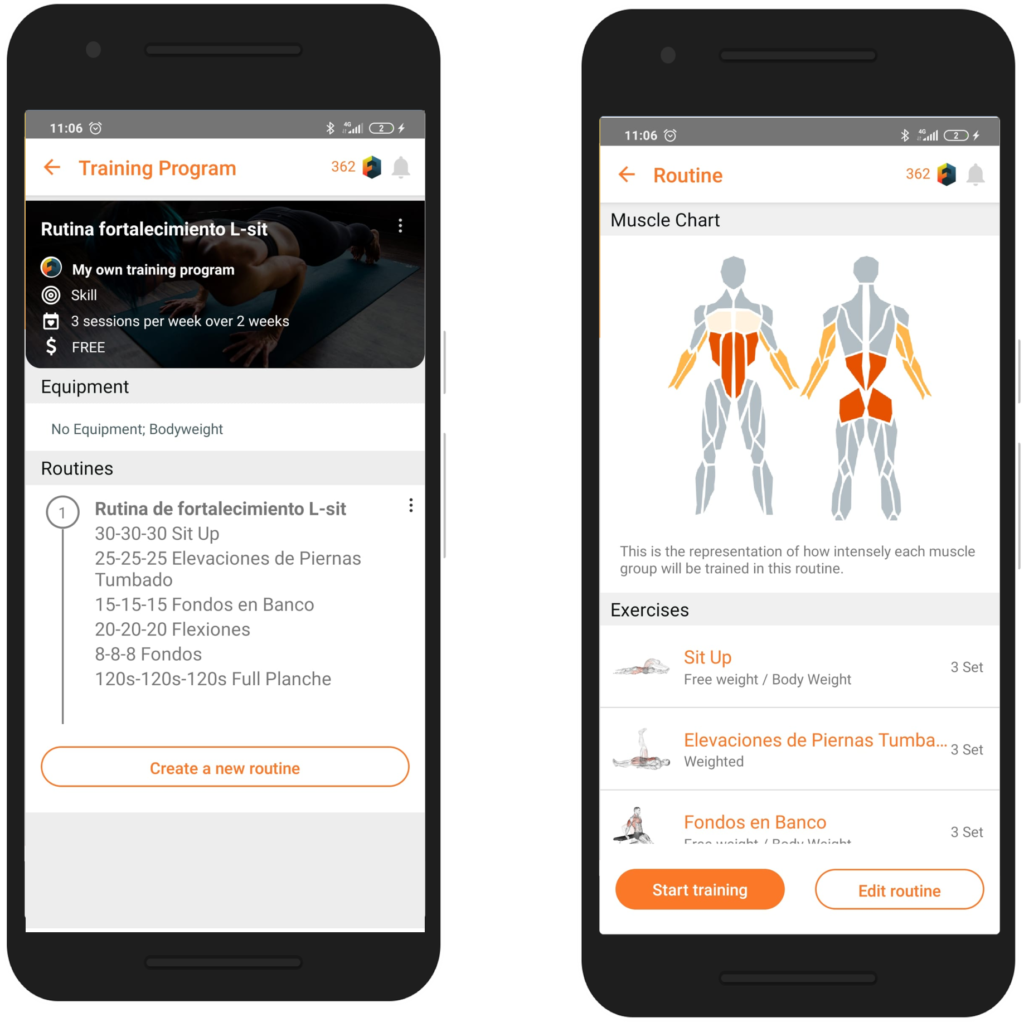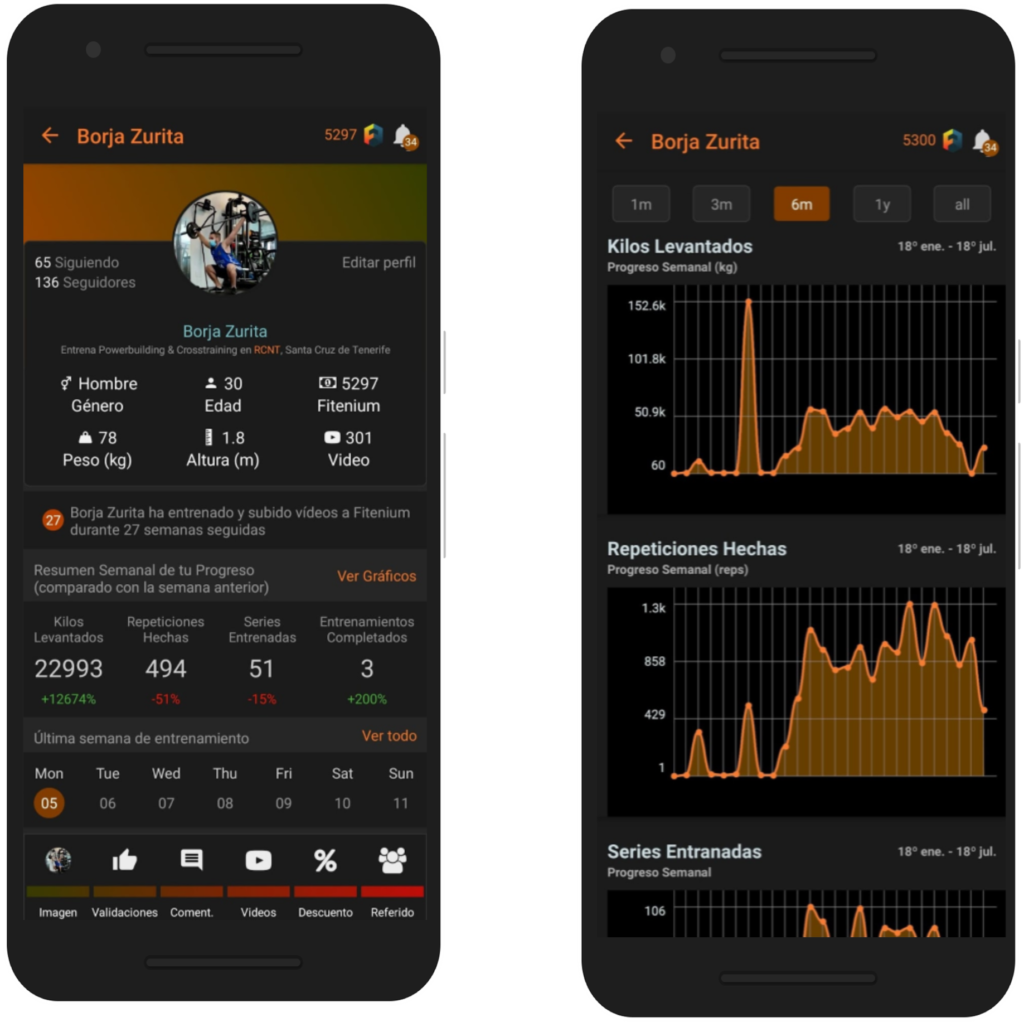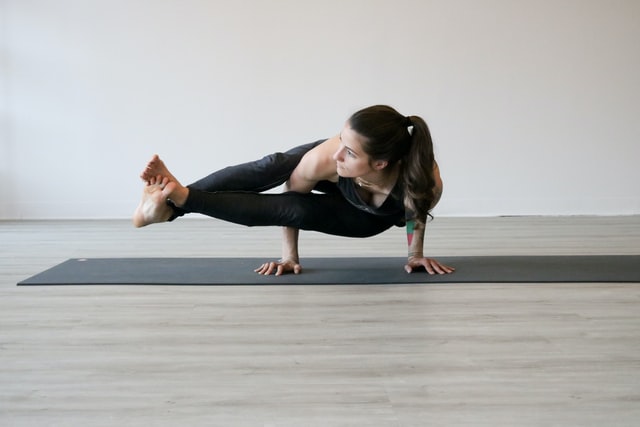
How to do an L-sit and its routine from scratch
The L-sit is one of the most important isometric exercises. Don’t think of the L-sit as an easy exercise that is within everyone’s reach; to pull it off you will need a good amount of strength from head to toe and a good level of flexibility to control it.
Do not be intimidated by the L-sit either, since with the necessary training and perseverance you will be able to achieve it. First of all we recommend you to make a structured progression starting with carrying out the Tuck sit. First of all we recommend you to make a structured progression starting with carrying out the Tuck sit.
With the L-sit you will work a large part of the muscle groups in the body since it is a very complete exercise: shoulders, triceps, the abdominal area of the core, the pelvic area, quadriceps, and deltoids. In this article we will review which are the most common progressions to achieve it and how you can find the guide you need in the Fitenium app to carry it out.
Strengthening routine for the L-sit
Below you can find a strengthening routine to achieve the strength needed to attempt the L-sit. Completing these exercises will not guarantee that you will be able to carry out the exercise, but they will help you prepare your muscle groups and obtain a minimum level of strength with which to advance in the specific routine.
Try to do this routine for at least two weeks, three days each week to get the muscle tone needed for the specific routine.
| Exercise | Sets | Rep / Time | Rest |
| Abs | 3 | 30 | 1-2 min |
| Leg raises | 3 | 25 | 1-2 min |
| Bench dips | 3 | 15 | 1-2 min |
| Push ups | 3 | 20 | 1-2 min |
| Dips | 3 | 8 | 2-3 min |
| Planche | 3 | 120 sec | 1-2 min |
If you want to continue your training and get results, we advise you to follow this strengthening routine for free through the Fitenium app where you have this routine and many more at your disposal.
Specific routine for the L-sit
To get into the L sit you’re going to need proper balance and maintaining scapular posture to lift yourself up.
Follow these exercises to get the L-sit.
1/ Stand up Keeping BOTH feet on the ground
The L-sit can be performed on parallel bars, on the ground, and on rings. Although if you are starting, we recommend that you carry out the exercise on two parallel bars as they will help you maintain balance, you will not have such a high muscular demand on your wrists and you will be able to gain a few more centimeters to hold your body off the ground.
- Try to get up keeping your legs stretched out in front of you. The goal of this exercise is to get your shoulders down enough so that they can carry partial weight of your body.
- Repeat this exercise several times and make sure that you maintain a vertical spine from the floor to your shoulders.
- Maintaining a correct position in the upper part of your body is essential to continue your progression.
Remember that you can find your personalized training program in the Fitenium app. You will not only find the exercises that you should perform each day, but also visualizations of how to perform them, notes on training programs, rest times and much more.
2/ Stand up Keeping only one leg on the ground
During this exercise the objective will be to progressively increase the weight that you are carrying on your body when you stand up.
- Sit down again with both legs stretched out in front of you and try lifting your entire body and one leg. If you are not able, you can flex the leg that you are lifting.
- Repeat this exercise several times, changing legs and try to maintain a minimum of 3 seconds in the raised position.
- Remember that you must maintain verticality in the upper part of your body to continue your progression.
3/ Perform the tuck sit
Up to now the routine has been the same as that we mentioned for the Tuck sit.
- Sit back down with both legs bent in front of you and try lifting your whole body up. If you can’t go back to step 2 or increase the intensity in the strength routine above.
- At first you will notice tremors throughout the body, especially in the arms since for the first time you are maintaining all your weight. Try to find your balance and keep the position stable.
- Once you are able to stay suspended, work on improving the verticality of your back.
- Progressively increase the time of the Tuck sit by recording yourself on video with the Fitenium app to follow your progress and execution technique.
3/ Tuck sit with one leg extension
- Once you’ve secured the tuck sit with acceptable technique and can hold it for at least five seconds, try slowly straightening one leg until you reach full extension.
- Repeat the exercise slowly, keeping your leg fully extended for at least 2 seconds each time. Every second that you stay with your weight lifted will help you strengthen all the necessary muscles, do not give up.
- When you are able to keep one leg straight, try the other leg until you are able to hold at least 5 seconds on each leg. Ideally, you should be able to hold each leg for 5 seconds before hitting the ground.
4/ L-sit
You almost have it! Keep working steadily and you will get it.
- Start in the tuck sit position and very slowly try to extend your hips forward by twisting your arms with your elbows in. Hold this position for at least 10 seconds.
- Little by little, try slightly extending both of your legs until you are able to straighten them completely.
- It is very important that you work on improving the final position of the L-sit since the drop of the legs is one of the most common mistakes.
- Record yourself on video with the Fitenium app to improve your execution and keep track of the time you keep with your L-sit.
Follow your progress on your profile in Fitenium app. You will have at your disposal all kinds of metrics about your progress and evolution, exercises performed and calendar. Also, if you wish, we can send you training notifications and personalized emails with your progress.
conclusion and tips
The L sit is one of the most relevant isometric exercises with which you will train almost all muscle groups in your body. Following the strengthening routine and the specific one, you will be able to reach the L-sit if you train hard, although you should not be discouraged if you are not able to achieve it during the first weeks of training. All isometric exercises require a good physical condition to be able to carry them out.
Here are some tips for the correct execution of the L-sit
- Keep your shoulders drawn down.
- Your back should be straight when you are up.
- The chest should be high and out
- The knees must be locked in full extension.
- The toes should be pointing out.
The L-sit will also open the doors to more complex exercises such as the V-sit, the handstand and the plank. In fact, if you are able to do the L-sit you are probably only a few workouts away from being able to do these as well. In fact, if you are able to do the L-sit you are probably only a few workouts away from being able to do these as well.















